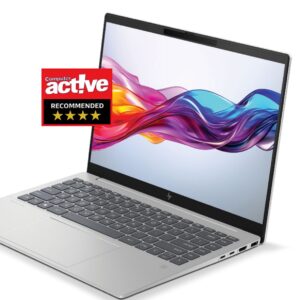ASUS TUF DASH F15 Review
$1,449.00
Asus’ TUF hardware usually tries to balance performance with value, and the Dash F15 is no different – this laptop costs £ inc VAT, but it includes an RTX 3070 and a new Core i7-11370H processor. Read our ASUS TUF DASH F15 Review.
Table of Contents
This 11th-gen Intel CPU has four Hyper-Threaded cores, alongside base and boost speeds of 3.3GHz and 4.8GHz, and a maximum TDP of 35W – that’s 10W lower than the chips usually used in gaming laptops. Intel wants this CPU to find a home inside slimmer, lighter laptops, but Asus has redressed the balance by deploying performance modes that sometimes push the chip back up to 45W with higher clock speeds.
There are power considerations with the RTX 3070 8GB too. In this machine, it runs at 1290MHz with a boost peak of1390MHz, thanks to its low TDP of 85W. That will restrict performance – the Aorus 15G XC (see Issue 213, p30) is pricier than the Asus, but it deploys the same GPU at 105W for faster clock speeds. The rest of the F15’s specification is solid, if unspectacular – it has 16GB of dualchannel 3200MHz DDR4 memory, a 512GB SSD, Gigabit Ethernet and dual-band Wi-Fi 6.
The F15’s affordability means there’s not much to shout about on the outside. The chassis combines plastic and metal, mostly in black, and it looks underwhelming and feels cheap in some areas. Build quality is good enough to ensure that this machine will survive frequent transport, though, and the weight and thickness of 2kg and 19.9mm are fine.
The left-hand side has a USB Type-C/ Thunderbolt 4 port that supports up to 100W of power delivery. Elsewhere, the Asus has three USB 3.2 Gen 1 ports and an HDMI2 port.
Still, the absence of a webcam, card reader, or fingerprint reader mean the Asus is limited compared with many competing laptops.
The keyboard has no numberpad either, and its turquoise backlight can’t be changed. It’s fast, consistent and comfortable, so it’s fine for mainstream gaming, but it lacks crispness. The trackpad buttons are also soft, so you’ll want to use a USB mouse if possible. Then there are the speakers: the top-end is tinny, the mid-range is muffled, and the bass is overwhelming and lacks detail – you’ll want a headset or external speakers for this machine.
Performance
In Assassin’s Creed Valhalla and Cyberpunk 2077, the Asus returned 99th percentile minimums of 39fps and 36fps. Those frame rates are playable, even if you won’t always hit a 60fps average. In Doom Eternal, the F15 managed a 99th percentile result of 95fps, so esports games at high frame rates are unlikely to be an issue. However, the Dash F15 also has a Turbo mode option, which ups the GPU boost clock by 100MHz over the standard Performance mode, and resulted in the Assassin’s Creed and Cyberpunk 99th percentile results rising to 46fps and 39fps. This is well worth having, although it also resulted in louder fan noise.
Meanwhile, the processor scored 59,780 in our singlethreaded image editing benchmark, and that’s superb – better than the Aorus’ 52,183, and faster than Core i9 CPUs. That bodes well for games, where you won’t find bottlenecks, and the F15 handles web browsing, office apps and photo editing without issues.
With just four cores, the Core i7-11370H is ordinary in our multi-threaded video encoding benchmark though – it falls behind the older Intel Core i7 chip and further behind AMD’s Zen 3-based laptop silicon, so it’s not the best option for content creation. The SSD is only middling too, with read and write speeds of 1,413MB/sec and 834MB/

sec – that’s faster than a SATA drive, but you can get quicker performance elsewhere.
The thermal results could be better as well. The GPU delta T of 51°C is fine when running high-end games, but hot air is ejected from the right-hand side, so your mouse hand can feel toasty. The laptop’s underside is too hot for it to be comfortable on your lap when gaming as well, and the metal above the keyboard was warm. In a tricky work test, the CPU peaked at a high delta T of 77°C and throttled to just under 4GHz, while external temperatures remained high. The fan noise was noticeable and high-pitched here too.
It’s not all bad news. In mainstream games and esports titles – and during everyday workloads – the Asus remained far quieter than in our stress tests, and the underside was cooler too.
DASH
+ Solid 1080p gaming ability
+ Good CPU for everyday tasks
+ Reasonably robust, slim and light
+ Includes Thunderbolt 4
RUSH

Meanwhile, the 15.6in, 1080p IPS display has a 144Hz refresh rate with adaptive sync and a 3ms response time, so it’s well suited to gaming – it’s smooth, fast and tear-free,- only the most demanding competitive gamers will want a quicker screen.
It has decent image quality too. It covered 96.7 per cent of the sRGB gamut with a delta E of 2.58 and a colour temperature of 6,945K. The latter figure is a tad cool, so the colours do lack a little vibrancy, but it’s not ruinous. The brightness level of 284cd/m2 is good enough for indoor use and contributes to a decent, punchy contrast ratio of 1,136:1.
The Dash F15 lasted for just an hour and 20 minutes when gaming on its battery, which is a normal result. Impressively, though, it lasted for eight hours in an everyday work test.
Conclusion
The Asus TUF Dash Fl5 is one of the more affordable gaming laptops around, and there are positives to find beyond the price. It has the pace to tackle mainstream games and esports titles, its CPU can handle everyday computing and it has a decent screen in a relatively slim, light chassis.
In plenty of areas, though, the F15 is average. It has one of the slowest RTX 3070 laptop implementations we’ve seen, the CPU isn’t great in multi-threaded software and the Asus has inconsistent thermal performance and underwhelming speakers. Ultimately, you get what you pay for. The Asus is a capable everyday laptop, but spending more will buy you better performance and quality.
MIKEJENNINGS
VERDICT
When you purchase through links on our site, I may earn an affiliate commission. Here’s how it works.
Specification: ASUS TUF DASH F15 Review
| Connections | ||||||||||
|---|---|---|---|---|---|---|---|---|---|---|
|
||||||||||
| Display | ||||||||||
|
||||||||||
| Laptops | ||||||||||
|
||||||||||
| Product properties | ||||||||||
|
||||||||||














There are no reviews yet.